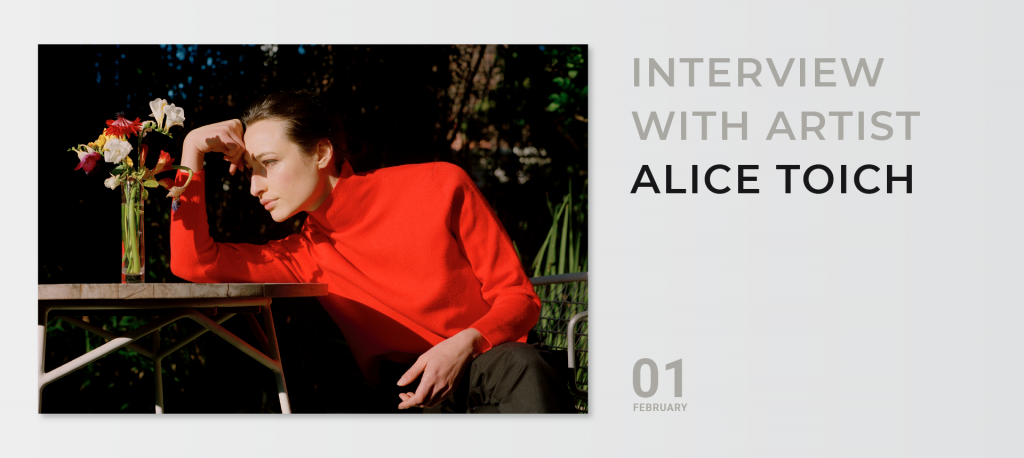

A contemporary South African artist using traditional techniques to transcribe state – that of her own emotional landscape through a naturalistic representation of the world around her. Alice Toich is drawn to beauty and tradition. The latter in the form of a deep appreciation for previous art movements and her desire to master traditional painting techniques – both of which she uses and incorporates into her own vision of the world to create work that is unique, charged with a profound and personal sense of her own emotion and refreshing within the context of the contemporary South African art scene.
WHAT DOES PAINTING MEAN FOR YOU?
A painting is not a real place. A painting is an invitation into a space that has been created by another person – so it has gone through a conduit of memory and emotion. You are dealing with paint, that is liquid, and slowly it crystalizes the movement. Having a sense of space when painting outdoors is the greatest challenge for me. The light element challenges all the time. Painting for me is a quick dance between rational thought and intuitive sense. I would say that painting is on the cusp of where I cannot go with words.


CAN YOU TELL US ABOUT YOUR JOURNEY AS AN ARTIST?
When I was young, nobody in my family was particularly artistic except for my grandmother who actually painted with Otto Klar. She grew up on a farm but she had a curiosity about culture. My own parents, despite not being artistic themselves, always nurtured my interests in classical culture and the arts. I always wanted to study art but I started at an advertising collage, Vega, which suited me because it was very practical. I became more and more interested during this time in art making. I then decided to do a Postgraduate at Michaelis School of Fine Art in Studio Practice – an incredible course where you get a studio on the premises for a year in order to produce work. That gave me a taste for painting on a regular basis. I found however that I had to push back at Michaelis during that year – to be honest, I feel like I went there to paint and they didn’t necessarily want me to paint.
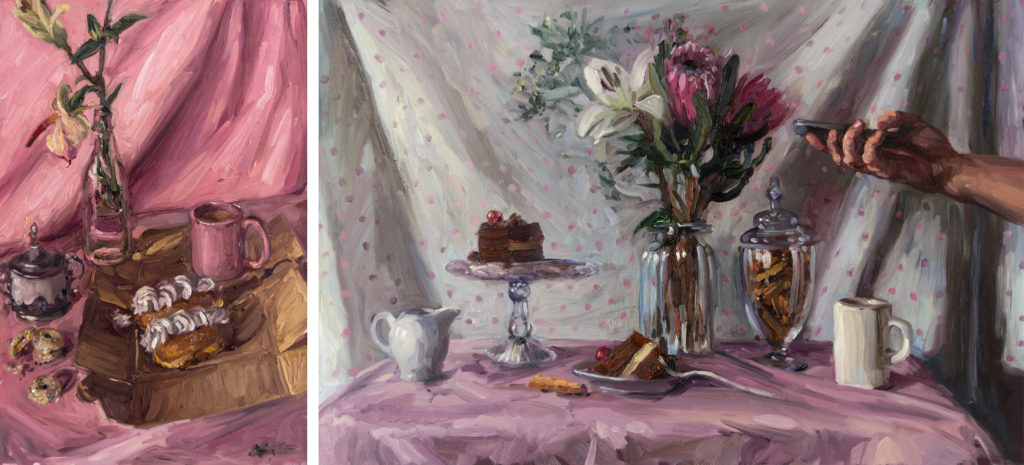

For my first solo show, The Icing Pink Ether in 2016, I had recently come out of Michaelis and I can honestly say that I didn’t feel like I had the right to talk about anyone or make an image about anyone – the show was then mainly comprised of self portraits. This body of work was also comprised of strong socio-political messages but somehow, it didn’t leave me feeling like I had done any justice to myself. I had to sit with that afterwards and although I honour and respect the work that I produced, I admit that at that particular moment in my career, I felt crippled by what I was allowed to produce.
Since then, I have been gravitating towards what I love and what I am naturally interested in. I am drawn towards technical artistic training, I love learning technique and turning it on its head. I push for the fact that something can be naturalistic or figurative and conceptual. I believe there is a sweet spot between conceptualism and craft.
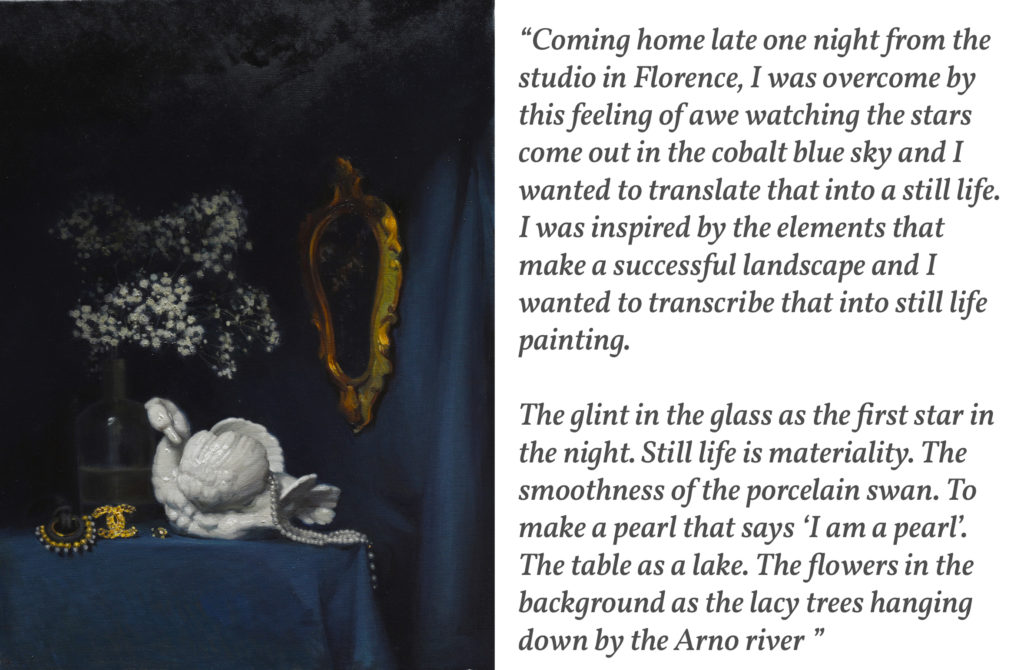

HOW WOULD YOU DESCRIBE YOUR ART MAKING NOW?
Before, I would say that I was compelled to make more socio-political work but right now, I am focusing on what I love, I am returning to art making that makes me feel alive. I love being outdoors and I am blown away by the natural beauty of South Africa. In my practice, I often strive to find peace and transcribe this state through my paintings. The state that I am in when I paint an artwork plays a very important role for me. That is why it was so important for me to change my practice to working from life. It is important for me to be in what I paint. I seek to transcribe state in my art making.
My own art making has different facets; with plein air work and landscapes, I have to spend a lot of time sketching and looking at compositions – this is work I feel needs to be made about what I am seeing.
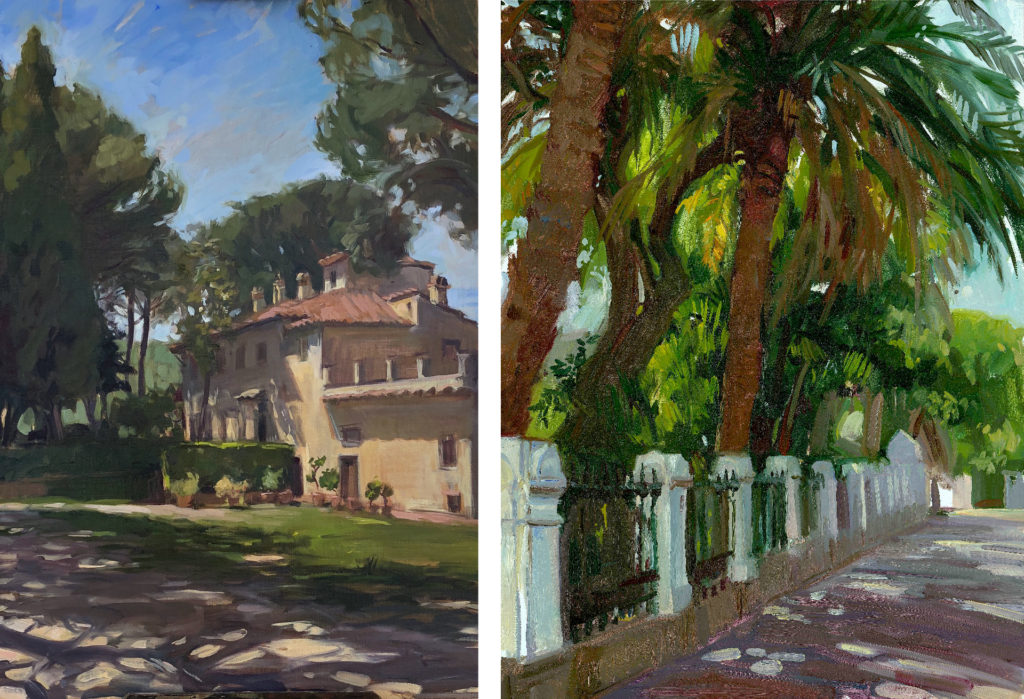

Then there is work that comes from a more intuitive and personal space as an enquiry into truth and human nature. For me, I strive for my highest potential to create work of the highest degree in terms of technique and concept together.
Additionally, I have been fascinated with portraits my whole life because I find them so perceptive, they are completely unobjective even though they might look like the sitter. They are constructed entirely, which I like because there is a lot of decision making that goes into their making.


PAINTING FROM LIFE IS A FUNDAMENTAL PART OF YOUR PRACTICE, CAN YOU TELL US ABOUT THIS JOURNEY IN YOUR ART MAKING?
What is very important to me is that for the past few years, I always paint from life. I went to the Florence Academy of Fine Art in Italy for three years to learn to convert my practice to life painting. Even before then, I gravitated towards learning the techniques required for painting from life and during my Studio Practice at Michaelis, I applied to a scholarship at the Grand Central Atelier in New York which I received. That month in New York was wonderful for me and it had a huge impact on my art making.
What I learnt from the Academy in Florence, that I have drawn back here, is that I always work in 3-hour stints, usually between 9-12 in the morning for consistent light. I learnt to deeply observe and memorise the world around me, light and colour – it has changed my whole life. The experience is so different. Painting from life is like eating food when you are starving as opposed to receiving a photo of food. Painting from life teaches me how difficult it is to make an image and how many canons of knowledge you rely on. I believe you have to go through the crucible of technique so that as an artist, you are not always trapped by the limits of what you can do.
After a lot of intensive technical training, I would say I am really interested in making images that represent what I am seeing, using myself as a conduit but at the same time, removing myself and learning my own shortcomings from a technical point of view. I am fascinated with the simple truths within technique.
AS AN ARTIST YOU WORK WITH A VARIETY OF GENRES, CAN YOU TELL US ABOUT HOW AND WHAT YOU ENJOY PAINTING?
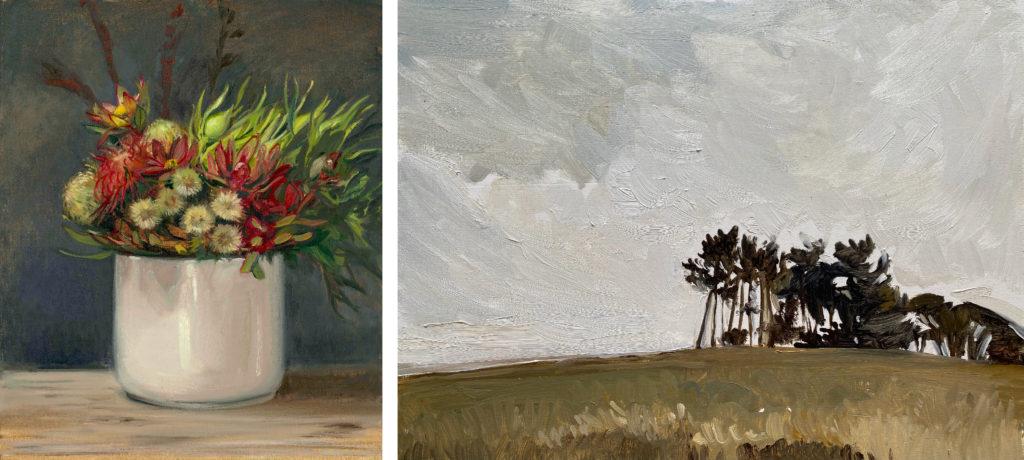

Unusually, I gravitate as an artist to many different genres whether it is figurative, still life or landscape painting. I have always been making images, drawing and painting since I was a small child. Thematically, they are surprisingly similar to what I am still doing. I have always been interested in people – I find portraits fascinating. The ultimate naturalist ethos when it comes to painting portraits would be to remove yourself from the image because then the truth of the moment can speak – I appreciate this sentiment but at the same time, it’s not how I paint. My work is charged with emotion. I always like to work on three things at the same time: really long-term personal projects that might take months, I like to work on the commissions I receive and lastly, I make time to paint work that is important to me and speaks for me.
CAN YOU TELL US ABOUT AN ARTIST WHO INSPIRES YOU?
I have always responded to artists who paint from a position of love. One of the artists who inspires me the most is John Singer Sargent (1856–1925) – the bravado and confidence in his brushstroke that does not compromise accuracy. I resonate with his dedication to paint in his own way, despite the modern context and tendencies emerging during his artistic career. This is fundamental to my own practice as an artist, to create art that is from an unapologetic place of truth.


TATE COLLECTION

